Today’s Current Affairs: 17th March 2023 for UPSC IAS exams, State PSC exams, SSC CGL, State SSC, RRB, Railways, Banking Exam & IBPS, etc
Table of Contents
Baal Swaraj Portal:
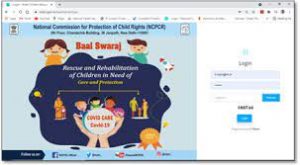
Women and Child Development Minister introduced about Baal Swaraj portal in Rajya Sabha.
- Baal Swaraj Portal is a portal launched by NCPCR for online tracking and digital real-time monitoring mechanism of children in need of care and protection.
- The portal has two functions- COVID care and CiSS.
- COVID Care link caters to the children who have lost either or both parents due to COVID-19 or otherwise post March 2020.
- Ciss- to help in the rehabilitation process of Children in Street Situations.
- Portal also provides a platform for professionals and organizations to provide any help for children in need in the form of open shelters, counselling services, medical services, de-addiction services, education services, volunteering etc.
- It has been launched under a centrally sponsored scheme namely Mission Vatsalya.
- Mission Vatsalya scheme (erstwhile Integrated Child Protection Scheme) launched in 2009-10 for supporting the children in difficult circumstances.
Atal Vayo Abhyuday Yojana:
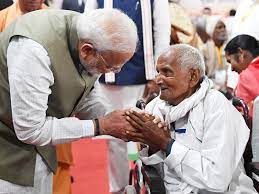
The Department of Social Justice and Empowerment is implementing Integrated Programme for Senior Citizens (IPSrC), a component of Atal Vayo Abhyuday Yojana.
- It is a Central Sector Scheme, which is formerly known as National Action Plan for Senior Citizens.
- Its vision is to create a society where senior citizens live healthy, happy and empowered life.
- It has two components – the Integrated Program for Senior Citizens (IPSrC) and the State Action Plan for Senior Citizens (SAPSrC)
- IPSRC entails setting up homes to improve the quality of life of senior citizens, especially indigent senior citizens for writing basic amenities.
- SAPSRC: Each state/union territories expected to frame its own action plan for the welfare of senior citizens.
- Under IPSrC component grant in aid is provided to NGOs/ Voluntary Organisations (VOs) for running and maintenance of old age homes, Continuous Care Homes.
Exercise SEA DRAGON 23:

Indian Navy is participating in SEA DRAGON 23 exercise in waters off Guam, USA which has been scheduled from 15-30 March 23.
- The Sea Dragon is an annual, multinational anti-submarine warfare (ASW) exercise conducted by the United States Navy.
- Participating Countries: India, USA, Japan, Canada and South Korea.
- The annual exercise launched in 2014. This is the third edition of the coordinated multi-lateral ASW exercise for Long Range MR ASW aircraft.
- The Exercise aims to achieve high levels of synergy and coordination between the friendly navies, which is based on their shared values and commitment to an open, inclusive Indo-Pacific.
- The Exercise would witness representation by an Indian Navy P8I aircraft along with other countries’ aircrafts.
- This exercise will test the capabilities of participating aircraft in tracking simulated and live underwater targets, whilst also sharing mutual expertise.
Critical Minerals Project : India And Australia
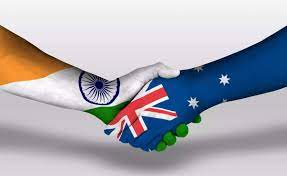
India and Australia have reached a significant milestone in working towards investment in critical minerals projects to develop supply chains between the two countries.
- Two lithium and three cobalt projects are among the five target projects that CMIP has chosen for thorough due diligence.
- Australia produces almost half of the world’s lithium and is the second-largest producer of cobalt and the fourth-largest producer of rare earths.
- The Partnership’s investments will aim to create new supply chains supported by essential minerals processed in Australia, which will support India’s efforts to reduce emissions from its energy network and establish itself as a hub of manufacturing, including for electric vehicles.
- Together, the two countries are dedicated to reducing emissions, ensuring energy security, and expanding the global markets for essential minerals and clean technology.
Critical Minerals:
- Critical minerals are elements that are the building blocks of essential modern-day technologies and are at risk of supply chain disruptions.
- Copper, lithium, nickel, cobalt, and rare earth elements are critical components in many of today’s rapidly expanding clean energy technologies, ranging from wind turbines and power grids to electric vehicles.
- As the transition to clean energy accelerates, demand for these minerals will skyrocket.
- India’s Department of Science and Technology, in collaboration with the Council on Energy, Environment and Water, drafted the Critical Minerals Strategy for India in 2016, with a focus on India’s resource requirements till 2030.
- The Indian Critical Minerals Strategy has identified 49 minerals that will be vital for India’s future economic growth.
Freshwater Shortage Report:

A global study released by Circle of Blue and World Wide Fund for Nature (WWF) analysed attitudes towards freshwater shortages by surveying almost 30,000 people from 31 countries.
- People in Argentina, South Korea, Vietnam, Colombia, Germany and Peru reported the largest increases in concerns about water shortages over the past few years.
- 30% of people claim to be greatly impacted by freshwater shortages.
- Strong concerns about freshwater shortages have increased from 49% in 2014 to 61% in 2022, among 17 countries consistently tracked.
- People in urban areas (32%) are more likely to be greatly affected by a lack of freshwater than those in rural (28%) or towns and suburban areas (26%).
- 38% of people said they have been “greatly” personally affected by climate change.
- People who claimed to be personally affected by climate change viewed drought as the most concerning impact of it.
- India’s freshwater crisis is constant. Although India has 16% of the world’s population, the country possesses only 4% of the world’s freshwater resources.
- According to NITI Aayog, a large number of Indians face high to extreme water stress.
- North India, the most populated belt of the nation is going to face grievous irreversible fresh water scarcity by 2060 since the availability of the vital resource will decline on account of climate change.
Rules For Registration And Regulation Of Foreign Lawyers And Foreign Law Firms In India, 2022:

The Bar Council of India (BCI) has notified the Rules for Registration and Regulation of Foreign Lawyers and Foreign Law Firms in India, 2022.
New Rules:
- The notification allows foreign lawyers and law firms to register with BCI to practice in India if they are entitled to practice law in their home countries. However, they cannot practice Indian law.
- According to the Advocates Act 1961, advocates enrolled with the Bar Council alone are entitled to practise law in India.
- All others, such as a litigant, can appear only with the permission of the court, authority or person before whom the proceedings are pending.
- They shall be allowed to practice transactional work /corporate work (Non-Litigious Practice) such as joint ventures, mergers and acquisitions, Intellectual Property matters, drafting of contracts and other related matters on a reciprocal basis.
- They shall not be involved or permitted to do any work pertaining to the conveyancing of property, title investigation or other similar works.
- Indian lawyers working with foreign law firms will also be subject to the same restriction of engaging only in “Non-Litigious Practice.”
Reliance Industries To Introduce Personal Genomic Mapping:
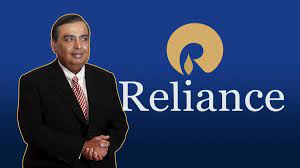
Reliance Industries will introduce personal genomic mapping (PGM) to the Indian market.
- All the genetic information of an organism is called its genome. It consists of nucleotide sequences of DNA.
- Genetic mapping can offer firm evidence that a disease transmitted from parent to child is linked to one or more genes.
- PGM is expected to grow by 2.4 times by 2032.
- PGM can identify and assess genes associated with a disease, and help with healthcare choices and precision medicine.
- PGM provides clues about which chromosome contains the gene and precisely where the gene lies on that chromosome.
- Ethical concerns exist around the possible use of PGM data for “designer” babies and the high cost involved and potential data abuse.
Nanakshahi Sammat 555:
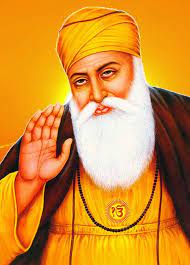
The Prime Minister greeted the Sikh community on commencement of Nanakshahi Sammat 555.
- This year’s Nanakshahi calendar has been dedicated to the 200th anniversary of the martyrdom of Akali Baba Phula Singh, the 300th anniversary of the birth of Sardar Jassa Singh Ramgarh and the 100th anniversary of the Jaito front.
- Nanakshahi Sammat 555 is a calendar system that was introduced by the Shiromani Gurdwara Parbandhak Committee (SGPC) in 2003.
- It is named after the founder of the Sikh religion, Guru Nanak Dev Ji to mark his 500th birth anniversary.
- It is a tropical solar calendar used in Sikhism.
- The reference epoch of the Nanakshahi calendar is the birth of Guru Nanak Dev, corresponding to the year 1469 CE.
- It is based on the “Barah Maha” (Twelve Months), a composition composed by the Sikh gurus reflecting the changes in nature conveyed in the twelve-month cycle of the year.
- The year begins with the month of Chet, with 1 Chet corresponding to 14 March.
Rooftop Solar Scheme:

The Union Power & NRE Minister announced that 3377 MW capacity has been allocated to States under the ROOFTOP SOLAR SCHEME.
- ROOFTOP SOLAR SCHEME is under the Ministry of New and Renewable Energy (MNRE).
- The ministry has announced Phase II of the scheme.
Under Rooftop Solar Programme Phase-II :
- A Central Financial Assistance (CFA) of up to 40% of the benchmark cost is provided for the installation of Rooftop Solar (RTS) projects upto 3 kW capacity and 20% for capacity beyond 3 kW and upto 10 kW for individual households in the residential sector
- For Group Housing Societies/Residential Welfare Associations (GHS/RWA), CFA is limited to 20% of the benchmark cost for installation of an RTS plant of capacity up to 500 kW for the supply of power to common facilities.
India AI Roadmap:

The Ministry of Electronics and IT (MEITY) set up a task force for framing a draft roadmap for the artificial intelligence ecosystem
- INDIAai (The National AI Portal of India) platform will help in boosting research and facilitate tools required for the growth of the start-up community.
- It is a joint venture by MEITY, NEGD and NASSCOM
- AI is expected to add USD 967 billion to the Indian economy by 2035
- AI is expected to contribute significantly to India’s economic growth by creating new job opportunities, increasing productivity, and fostering innovation.




